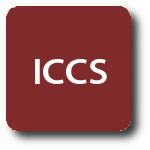CHICAGO, IL USA (UroToday.com) -
Secondary Analysis Of The Study of Urgent PC Versus SHAM Effectiveness in Treatment Of OAB Symptoms (SUmIT) Trial
This poster was a secondary analysis to evaluate treatment efficacy of percutnaneous tibial nerve stimulation (PTNS) based on demographic and baseline health factors, and to analyze the treatment effect after 6 and 12 interventions. Two hundred eight out of 220 participants who were enrolled in the SUmIT Trial were included in this analysis. Differences in treatment efficacy were evaluated by age, gender, history of OAB medication use, and baseline urge UI. Validated questionnaires and 3-day voiding diaries were used to analyze treatment efficacy. Among the 208 subjects analyzed, 79% were women, 48% were≥ 65 years old, 31% reported previous OAB medication use, and 79% reported baseline urge UI. While men and women experienced similar improvement in OAB symptoms in the PTNS group (28% versus 56%), the rate of improvement differed in men and women in the SHAM group (5% versus 26%). Also, those with baseline urge UI tended to have greater reductions in moderate-to-severe urgency than patients without baseline urge UI. No differences in efficacies were detected by age or history of OAB medication use. The percent of participants reporting ≥ 50% improvement in moderate to severe urgency after 12 interventions was 46% and 28% for PTNS and SHAM groups, respectively.
Interestingly, no significant differences in overall OAB symptoms were reported between the PTNS and SHAM groups after 6 interventions. However, all OAB symptoms significantly improved from the sixth to the twelfth treatment in the PTNS group, but not in the SHAM group. This is not surprising, as in clinical practice, improvement in urgency and frequency symptoms occurs towards the end of the treatment cycle, usually by the ninth treatment. In this analysis, after 12 interventions, 58.3% of the PTNS patients reported improvement compared to 21.9% of SHAM patients.
These authors feel that PTNS is an effective OAB treatment in both men and women, regardless of age and prior use of OAB medications. However, 12 weekly treatments are needed to see maximum effectiveness.
Presented by Sue Holman and Nancy Kolb at the Simon Foundation for Continence's Innovating for Continence Conference Series - April 12 - 13, 2013 - Chicago, Illinois USA
Uroplasty, Minnetonka, MN
Reported for UroToday.com by Diane K. Newman, DNP, ANP-BC, FAAN
About the Conference Series
 The Innovating for Continence Conference Series is a unique, international, biennial conference for engineers, physicians, nurses, people with incontinence and their caregivers, academics, industry executives, and those with a passion for increased development of creative and efficacious products for the management of incontinence.
The Innovating for Continence Conference Series is a unique, international, biennial conference for engineers, physicians, nurses, people with incontinence and their caregivers, academics, industry executives, and those with a passion for increased development of creative and efficacious products for the management of incontinence.
The multi-disciplinary meetings attract speakers from a wide range of disciplines and is organized and hosted by The Simon Foundation for Continence (Chicago, IL USA). It is made possible through generous support from individual and industry sponsors.
Professor Alan Cottenden is the ongoing chair for the conference series. He is Professor of Incontinence Technology at University College London, England. Professor Cottenden is the Chair of the Organizing Committee for the biennial conference "Incontinence: The Engineering Challenge" hosted by the UK Institution of Mechanical Engineers along with the committee on Management Using Continence Products of the International Consultation on Incontinence (ICI). He has been involved in continence technology for almost 30 years, working on clinical and basic science aspects as well as product development and international standards work (ISO).



